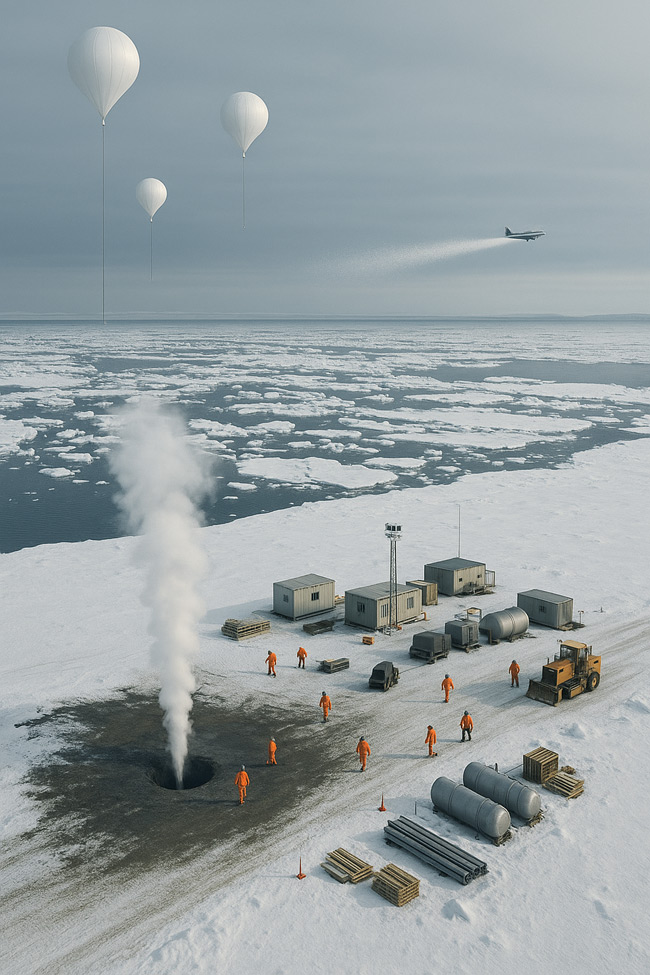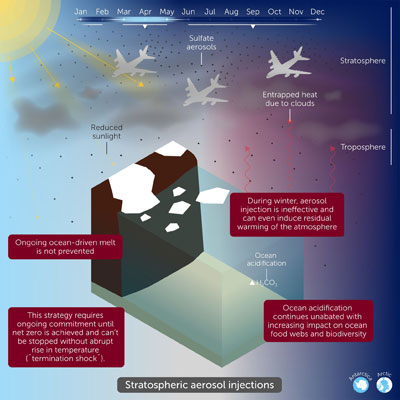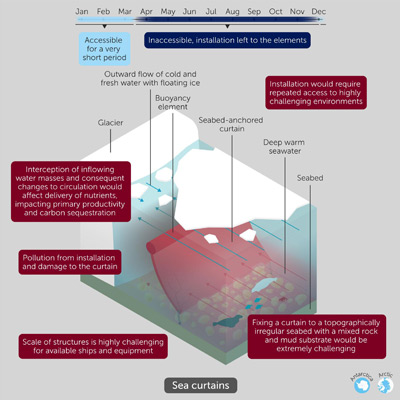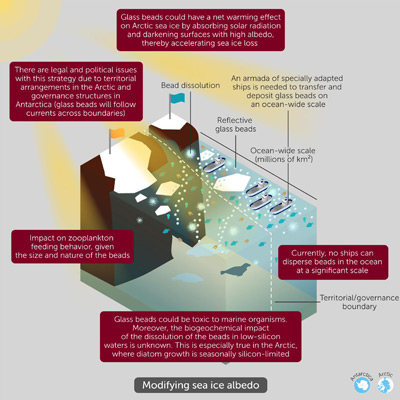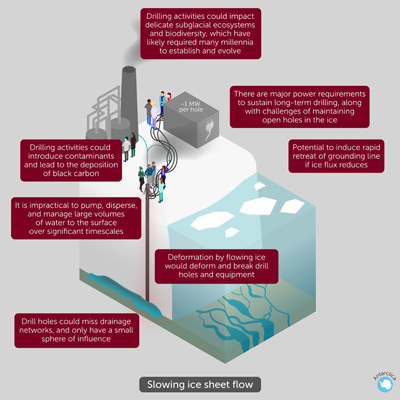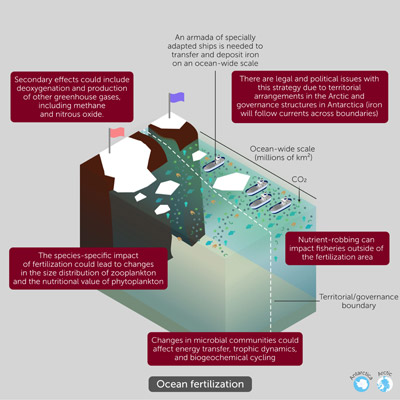
25th October 2025 Study casts doubt on polar geoengineering proposals Five prominent geoengineering ideas – the pumping of seawater onto Arctic ice, deploying reflective glass beads, building underwater curtains, injecting aerosols, and fertilising oceans – are technologically unfeasible, unscalable, and environmentally harmful, according to a new study.
Five well-publicised geoengineering ideas are highly unlikely to help the polar regions and could harm ecosystems, communities, international relations, and our chances of reaching net zero by 2050. That's the conclusion of a new assessment, published in Frontiers in Science, which looked at five of the most developed geoengineering proposals currently being considered for use in Antarctica and the Arctic. The poles are home to fragile communities and ecosystems, as well as most of the world's ice. Technological "geoengineering" approaches have been proposed to delay or address the impacts of climate breakdown in these regions. However, this new review finds that the most prominent geoengineering ideas are likely to cost many billions in set-up and maintenance, while reducing pressure on policymakers and carbon-intensive industries to reduce greenhouse gas emissions. The proposals were also found likely to introduce additional ecological, environmental, legal, and political challenges. "These ideas are often well-intentioned, but they're flawed. As a community, climate scientists and engineers are doing all we can to reduce the harms of the climate crisis – but deploying any of these five polar projects is likely to work against the polar regions and planet," said lead author Prof Martin Siegert from the University of Exeter. "If we instead combine our limited resources towards treating the cause, instead of the symptoms, we have a fair shot at reaching net zero and restoring our climate's health," said co-author Dr Heidi Sevestre from the Arctic Council. To conduct their new assessment, the researchers looked at five geoengineering proposals that have received the most attention to date: • Stratospheric aerosol injections: releasing sunlight-reflecting particles such as sulphate aerosols into the atmosphere to reduce the sun's warming effect • Sea curtains/walls: flexible, buoyant structures anchored to the seabed to prevent warm water from reaching and melting ice shelves • Sea ice management: pumping seawater onto sea ice to artificially thicken it, or scattering glass microbeads onto sea ice to boost its reflectivity • Basal water removal: pumping subglacial water away from underneath glaciers to slow ice sheet flow and reduce ice loss • Ocean fertilisation: adding nutrients, such as iron, to the polar oceans to stimulate blooms of phytoplankton – microscopic creatures that draw carbon into the deep ocean when they die. They measured each proposal against its likely cost, scope of implementation, effectiveness, feasibility, potential negative consequences, and existing governance frameworks that would allow timely deployment at scale. They also assessed each proposal's potential appeal to those vested in avoiding emissions cuts.
Click to enlarge
The study found that none of the five polar geoengineering ideas have proven effective or feasible. No field trials exist for sea curtains or ice reflectors, and only limited modelling or small tests have been done for aerosol injections, ocean fertilisation, and glacier water removal. The authors note that the polar regions are among the most difficult places on Earth to operate, and that large-scale deployment would require an unprecedented human presence. Each proposal carries serious environmental risks. Glass beads could actually darken ice instead of brightening it, seawater pumps would need vast infrastructure, aerosol injections could harm the ozone layer, sea curtains could disrupt marine migration routes, and fertilisation could unbalance ocean ecosystems. All would be extremely costly – at least $10 billion each, with sea curtains alone potentially being over $80 billion – and none have clear governance frameworks. The researchers conclude that even if technically possible, these schemes could not be deployed fast enough to offset global warming, and may serve as distractions that delay essential emissions cuts. Only rapid decarbonisation, they argue, can protect polar regions without introducing new risks. "Mid-century is approaching, but our time, money, and expertise is split between evidence-backed net zero efforts and speculative geoengineering projects," explained Prof Siegert. "We're hopeful that we can eliminate emissions by 2050, as long as we combine our efforts towards reaching zero emissions." "While research can help to clarify the potential benefits and pitfalls of geoengineering, it's crucial not to substitute immediate, evidence-based climate action for as-yet unproven methods," said Dr Sevestre. "Crucially, these approaches should not distract from the urgent priority of reducing emissions and investing in proven mitigation strategies." The researchers note that while their assessment focuses on the polar regions, other geoengineering ideas – such as marine cloud brightening and space-based solar reflectors, also need to be evaluated against these criteria. "The good news is, we have existing goals that we know will work," said Prof Siegert. "Global heating will likely stabilise within 20 years of us reaching net zero. Temperatures would stop climbing, offering substantial benefits for the polar regions, the planet, and all lifeforms."
Comments »
If you enjoyed this article, please consider sharing it:
|
||||||
